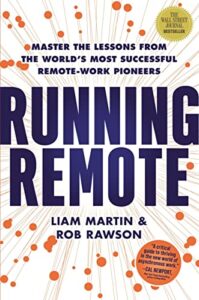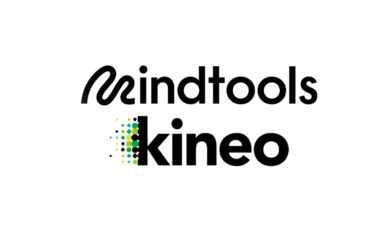We’ve heard a lot about the pros and cons of remote work in the last few years. But the business leader and author Liam Martin thinks it’s more useful to talk about “asynchronous” work.
This is all about when you do your work, rather than where you do it. And it’s usually remote, but not always.
With a traditional synchronous model, you and your team will keep similar hours, meeting and working together in real time – maybe online, maybe face to face. With asynchronous work, people do their part whenever they want or need to. And rather than talking to colleagues, they find out what to do by tapping into systems and databases.
Does that sound appealing to you, or a little bit isolating? Well, according to Martin, it depends on how it’s done.
The Asynchronous Mindset
Martin recently shared his experiences and tips in a new book, co-written with his business partner Rob Rawson, called “Running Remote: Master the Lessons From the World’s Most Successful Remote-Work Pioneers.” And it’s a Wall Street Journal and Publishers Weekly Bestseller.
When I talked to him for the latest Mind Tools Expert Interview, Martin explained the “asynch mindset,” based on “deliberate over-communication, democratized workflow, and detailed metrics.”
Here’s an excerpt. (You can stream the audio clip below or read a transcript here.)
My Experience of Asynchronous Working
As an independent journalist, I’ve spent many years working remotely and asynchronously, with mixed results.

When I was doing a master’s degree in the U.K., asynchronous work offered a financial lifeline. I was an associate editor for a New York-based magazine, and I edited articles while my editor slept, sending completed work in time for when he switched on in the morning. This situation suited all of us.
Earlier in my career, I was the Mexico correspondent of an American business magazine. Based in Mexico City, I worked alone, day after day, keeping in touch with my editor in Houston via email and occasionally text and phone.
I thrived on the autonomy this gave me, and loved coming up with new ideas for the magazine that I could run with, without anyone else weighing in. This kind of grassroots decision making is one of the positive features of asynchronous working, according to Martin.
But on the downside, it was sometimes difficult to motivate myself, and the days could drag. And if I needed a quick answer to something specific and unusual, which wasn’t in any policy or guidance document, well, “quick” was rarely an option. I had to wait until my editor came back online.
In-Person Communication Wins
Looking back on these experiences, I find the faces of my editors swimming into focus. Because we did meet up occasionally, and it is those face-to-face interactions that stand out most vividly when I think of those jobs.
Although a passionate advocate of asynchronous working, Martin agrees that synchronous communication remains an important piece of the remote-working puzzle. In fact, in his own hierarchy of communication, “in-person” comes top, and every year, his own company holds a face-to-face retreat for all its employees.
“We’ve recognized that synchronous time is so important to be able to, number one, build rapport between all of our different team members and trust, but also allow us to be able to really close the chapter on one year of the business and open up another chapter in the business,” he explains.
“We’ve recognized that synchronous time is so important to build rapport and trust.”
Liam Martin
There are two reasons why they don’t do it more often: cost and efficiency. It’s expensive to get everyone in the same place, and it takes much longer to disseminate information in real time, rather than via a prepared document. Plus, with written information, you know that every recipient gets exactly the same message, and people can refer to it as often as they like.
Martin’s hierarchy of communication continues with voice and video calls, instant messaging, and finally email, as the foundation holding up the pyramid.
Be in Tune if Not in Synch
But however you communicate in asynchronous teams, perhaps what matters most is the attitude of team members.
I once worked with a graphic designer whose location changed from week to week. Over the course of one project, he moved from Spain to Mexico to Colombia.
The time zone changed, but his efficiency and excellent communication didn’t. The project ran smoothly, with great results. But I know that if he’d dropped the ball, even for one day, I would have railed against his digital nomad lifestyle!
Liam Martin’s model of remote asynchronous work relies on every member of the team being a hardworking self-starter, who will always read attachments to emails, no matter how long and dense they look, and will never feel sub-par or distracted or lonely.
If the pandemic has taught us anything, it’s that working in isolation doesn’t suit everyone. So I can understand why managers continue with the synchronous model, despite the allure of its opposite. It may be slower and more costly, but it fits how humans behave. And while it’s still humans doing much of the work, that makes a lot of sense.
Listen to the Full Story
You can listen to or read my full 30-minute interview with Liam Martin if you’re a Mind Tools Club member or if your employer is a Mind Tools for Business licensee.
Martin and Rawson’s book carries a prominent endorsement by Cal Newport, another expert we’ve already featured on Mind Tools. Search his name at the top of this page, and you’ll find our in-depth review of his book “Deep Work” and our exclusive Expert Interview with him.
If you’re not already a member, join the Mind Tools Club now to gain unlimited access to 2,400+ resources, including our back catalog of 200+ Expert Interviews. Or find out more about Mind Tools for whole organizations, big or small, by contacting our enterprise team.
Meanwhile, catch more excerpts and insights from my guests by searching our Expert Interview blog topic and by signing up free to the Mind Tools Expert Voices podcast.




